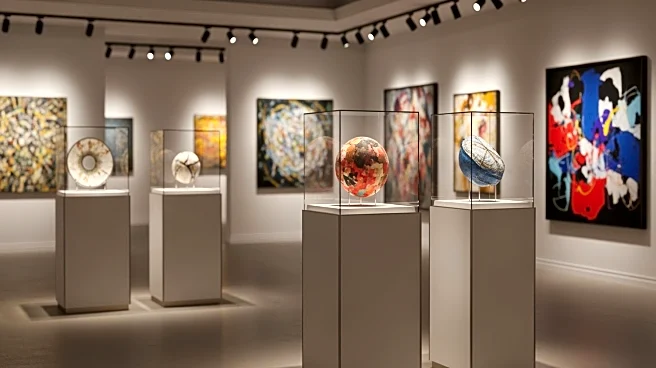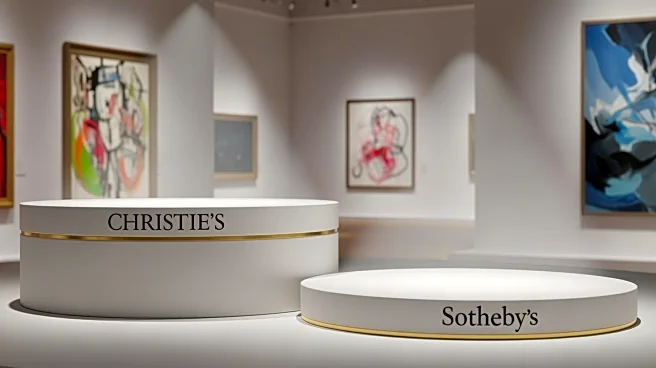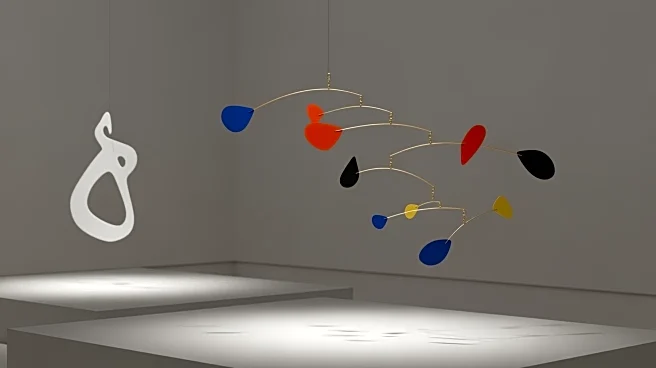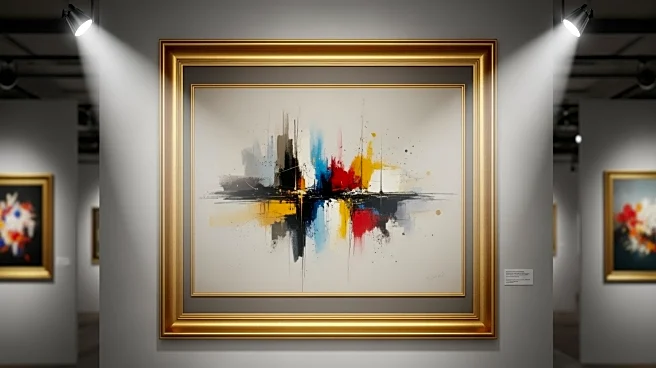What's Happening?
Christie's, a renowned auction house, recently held a successful evening auction in London, achieving $143 million in sales. This event marked a 30 percent increase compared to the previous year's equivalent
sale. The auction featured 20th- and 21st-century artworks, with a Peter Doig painting being the top lot, selling for $19.2 million, significantly surpassing its estimated value. This auction is part of a broader trend of strong performance in the art market, as evidenced by other auction houses like Sotheby's, which also reported substantial sales figures. The event highlights the continued demand for high-value art pieces and the resilience of the art market.
Why It's Important?
The success of Christie's auction underscores the robust state of the art market, which has shown resilience despite global economic uncertainties. This increase in sales not only benefits the auction house but also signals a positive trend for artists, collectors, and investors involved in the art industry. High-value sales like these can drive up the market value of similar artworks, influencing future auctions and private sales. Additionally, the strong performance of art auctions can have a ripple effect on related sectors, such as art insurance and logistics, further stimulating economic activity within the industry.
What's Next?
Following the success of this auction, Christie's and other major auction houses may continue to see increased participation and higher sales figures in upcoming events. Collectors and investors might be encouraged to bring more high-value pieces to market, anticipating favorable returns. Additionally, the art market's performance could attract new buyers and investors, further diversifying the market. Auction houses may also explore innovative ways to engage with a broader audience, including digital platforms and virtual auctions, to capitalize on the growing interest in art investment.
Beyond the Headlines
The art market's resilience and growth could lead to increased scrutiny regarding the provenance and ethical sourcing of artworks. As high-value sales become more common, there may be a push for greater transparency and regulation to ensure the legitimacy of transactions. Furthermore, the cultural significance of art as an investment vehicle might prompt discussions about the accessibility of art ownership and the role of public institutions in preserving cultural heritage.











